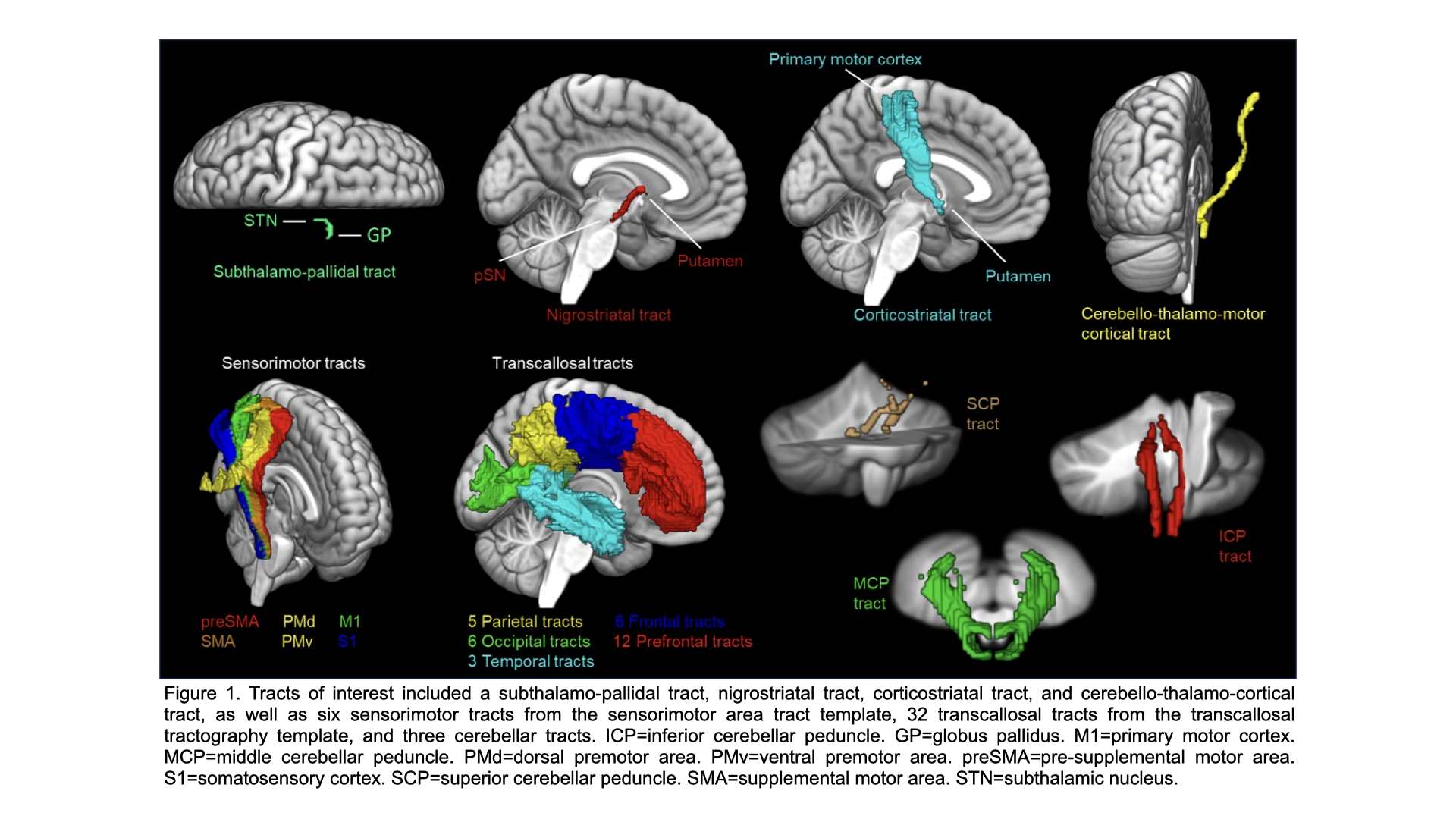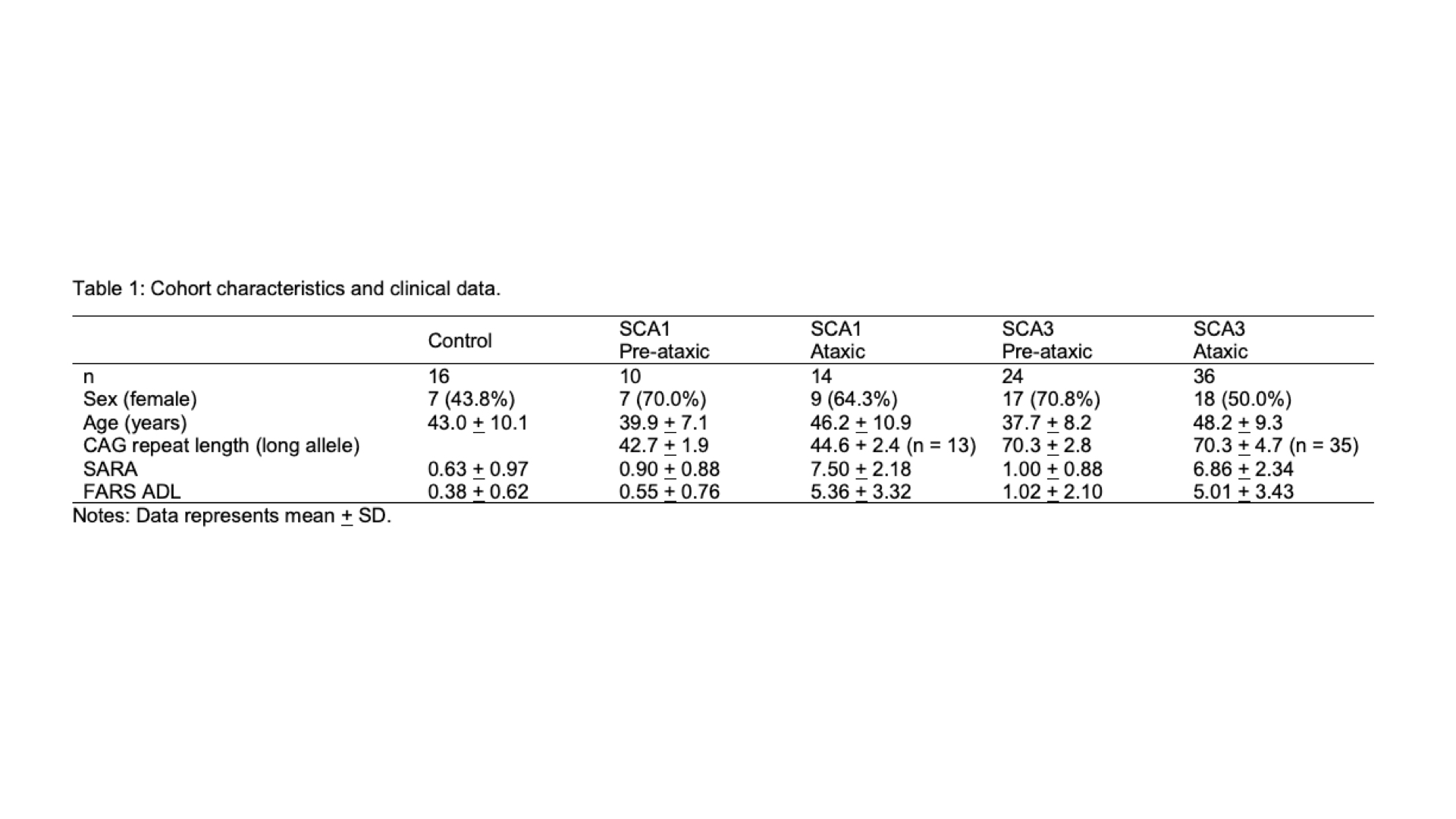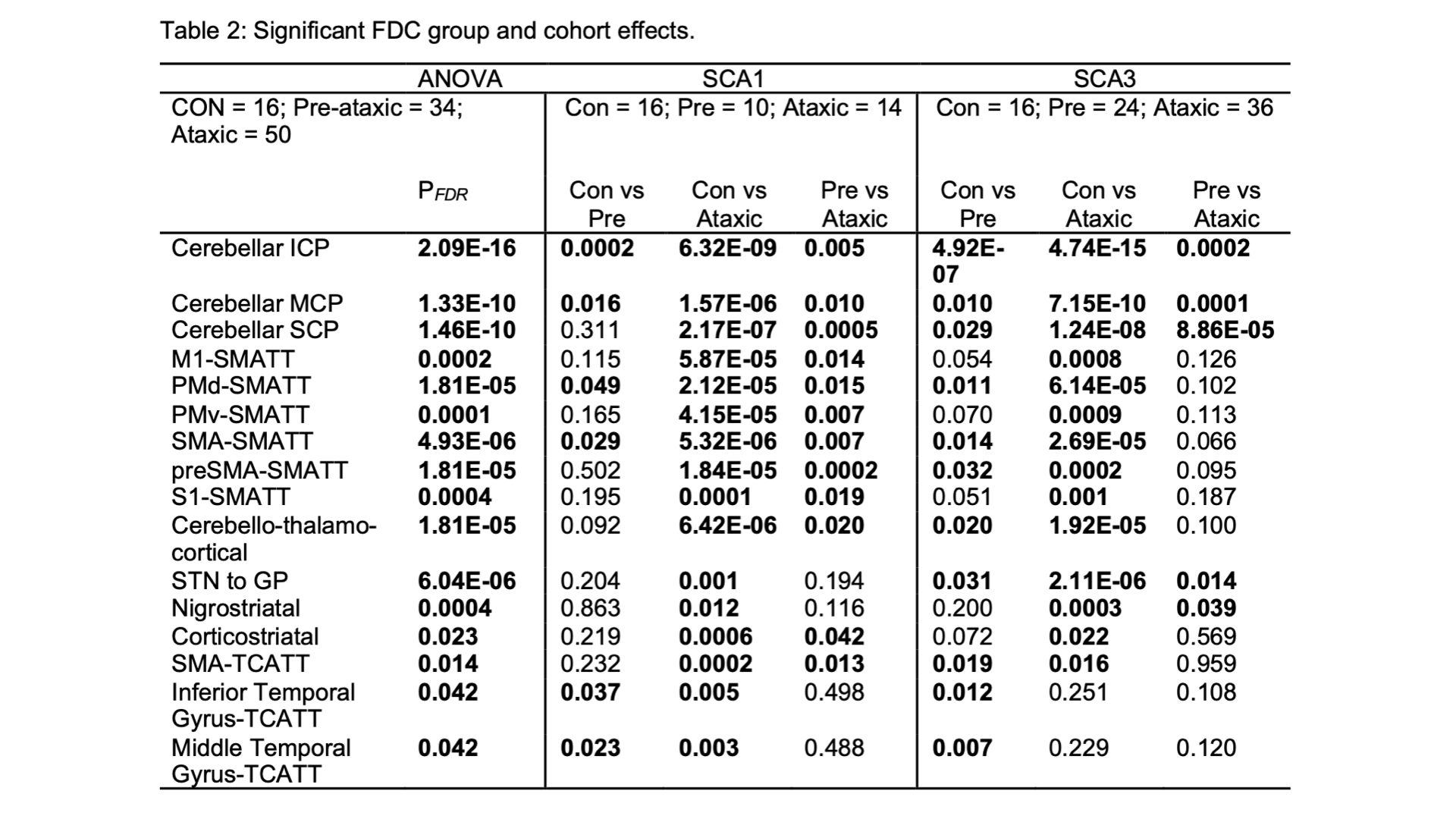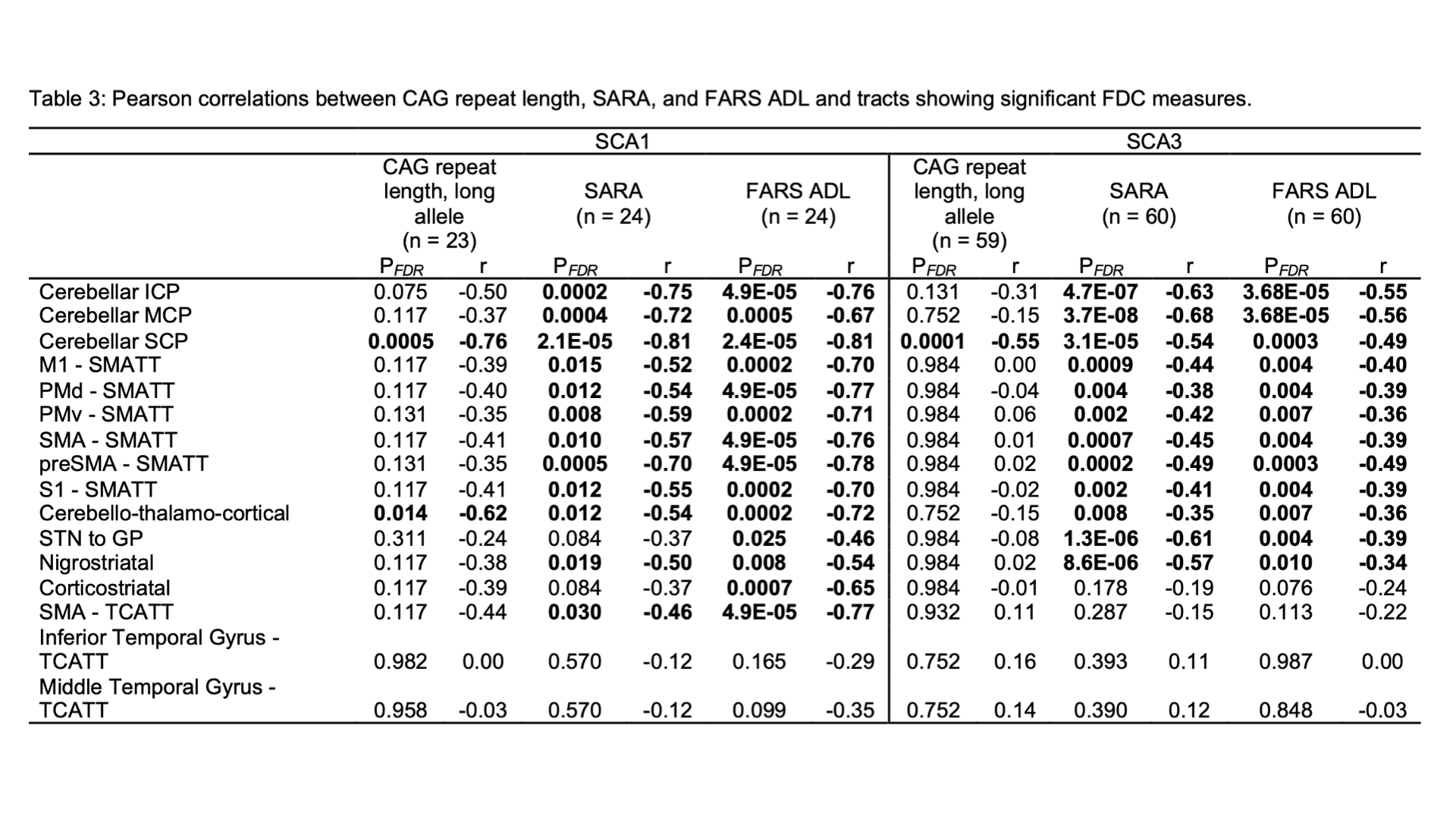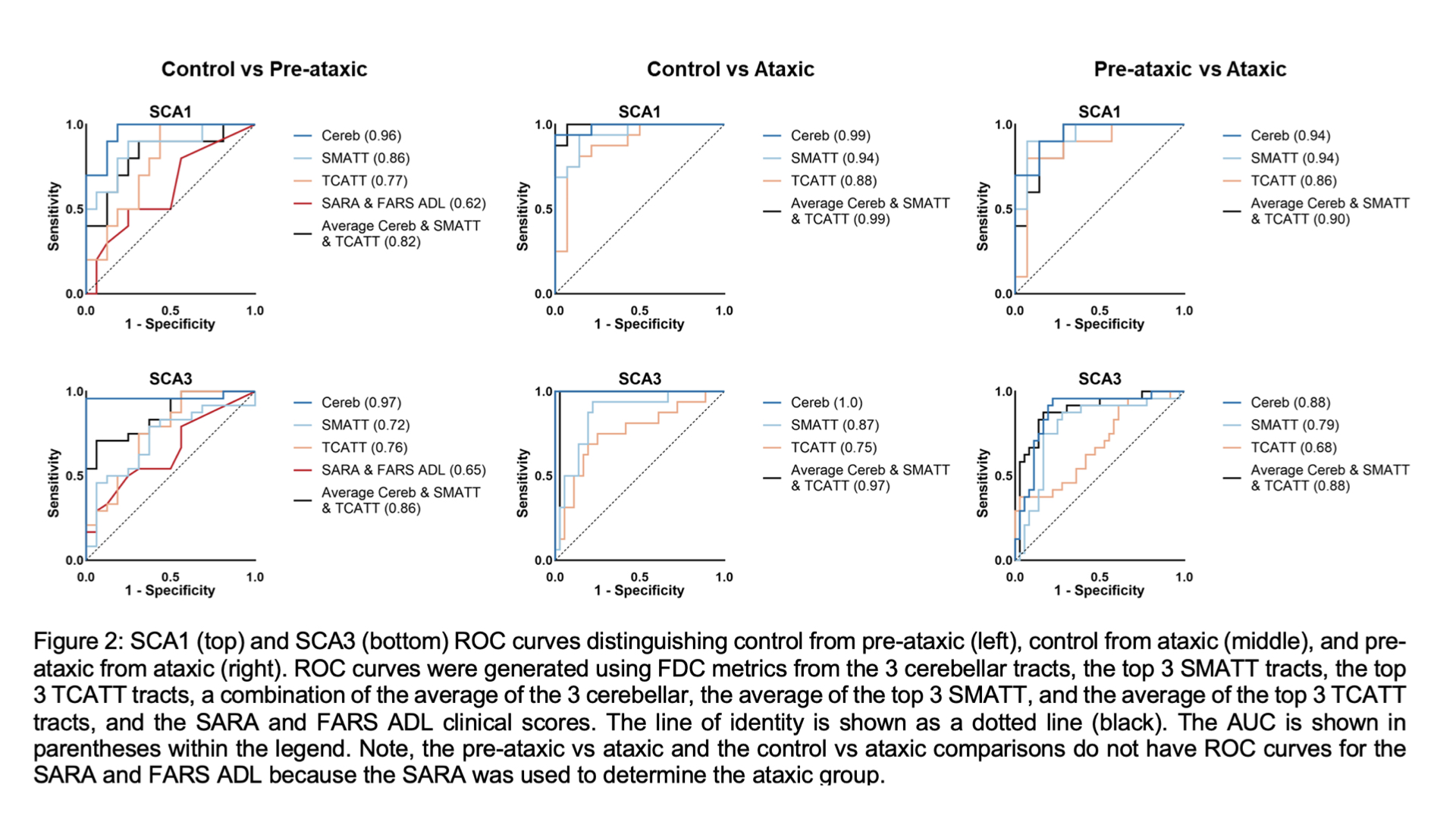Category: Ataxia
Objective: This study aimed to identify white matter changes in the brain of presymptomatic and early-stage SCA1 and SCA3 mutation carriers using fixel-based analysis of diffusion MR imaging data from a multisite trial setting.
Background: Spinocerebellar ataxias (SCAs) are a group of genetically heterogeneous neurodegenerative diseases causing progressive deterioration of balance, coordination, with profound impacts on quality of life. Therapeutic advances have been limited by a lack of sensitive biomarkers of disease progression.
Method: Fixel-based analysis was used to estimate microscopic fiber density, macroscopic fiber-bundle cross-section, and a combined measure of fiber density and fiber-bundle cross-section within 45 cerebral and cerebellar white matter tracts. Multivariate ANOVAs compared controls (n = 16), pre-ataxic (n = 10 SCA1, n = 24 SCA3), and ataxic patients (n = 14 SCA1, n = 36 SCA3). Clinical variables were correlated with fixel metrics and receiver operating characteristic analyses identified the white matter tracts most sensitive to distinguishing controls from pre-ataxic SCA1 and SCA3.
Results: We found widespread white matter deficits in pre-ataxic and ataxic patients compared to controls, all of which were associated with clinical measures of ataxia. We found that the combined fiber density and fiber-bundle cross-section measure from cerebellar tracts distinguished controls from pre-ataxia with high sensitivity and specificity for both SCA1 (receiver operating characteristic area under the curve = 0.96) and SCA3 (area under the curve = 0.97). The receiver operating characteristic analyses also revealed that cerebellar tracts resulted in a greater area under the curve than cortico-spinal and transcallosal tracts. These results demonstrate that fixel metrics offer sensitive disease-specific measures of early SCA progression that correlate with standard clinical measures.
Conclusion: The central finding of this study is that the FDC measure from the three cerebellar tracts (ICP, MCP, SCP) distinguish controls from pre-ataxic, controls from ataxic, and pre-ataxic from ataxic patients with high sensitivity and specificity for both SCA1 and SCA3. Data presented here support the use of fixel metrics as sensitive and potentially disease-specific measures of early disease progression that correlate well with standard clinical measures.
Figure 1
Table 1
Table 2
Table 3
Figure 2
To cite this abstract in AMA style:
D. Arpin, S. Subramony, D. Vaillancourt, M. Burns. Fixel Analysis of Diffusion Imaging in Cerebellar Tracts as a Quantitative Marker of Disease Progression in Spinocerebellar Ataxia [abstract]. Mov Disord. 2024; 39 (suppl 1). https://www.mdsabstracts.org/abstract/fixel-analysis-of-diffusion-imaging-in-cerebellar-tracts-as-a-quantitative-marker-of-disease-progression-in-spinocerebellar-ataxia/. Accessed January 2, 2026.« Back to 2024 International Congress
MDS Abstracts - https://www.mdsabstracts.org/abstract/fixel-analysis-of-diffusion-imaging-in-cerebellar-tracts-as-a-quantitative-marker-of-disease-progression-in-spinocerebellar-ataxia/

